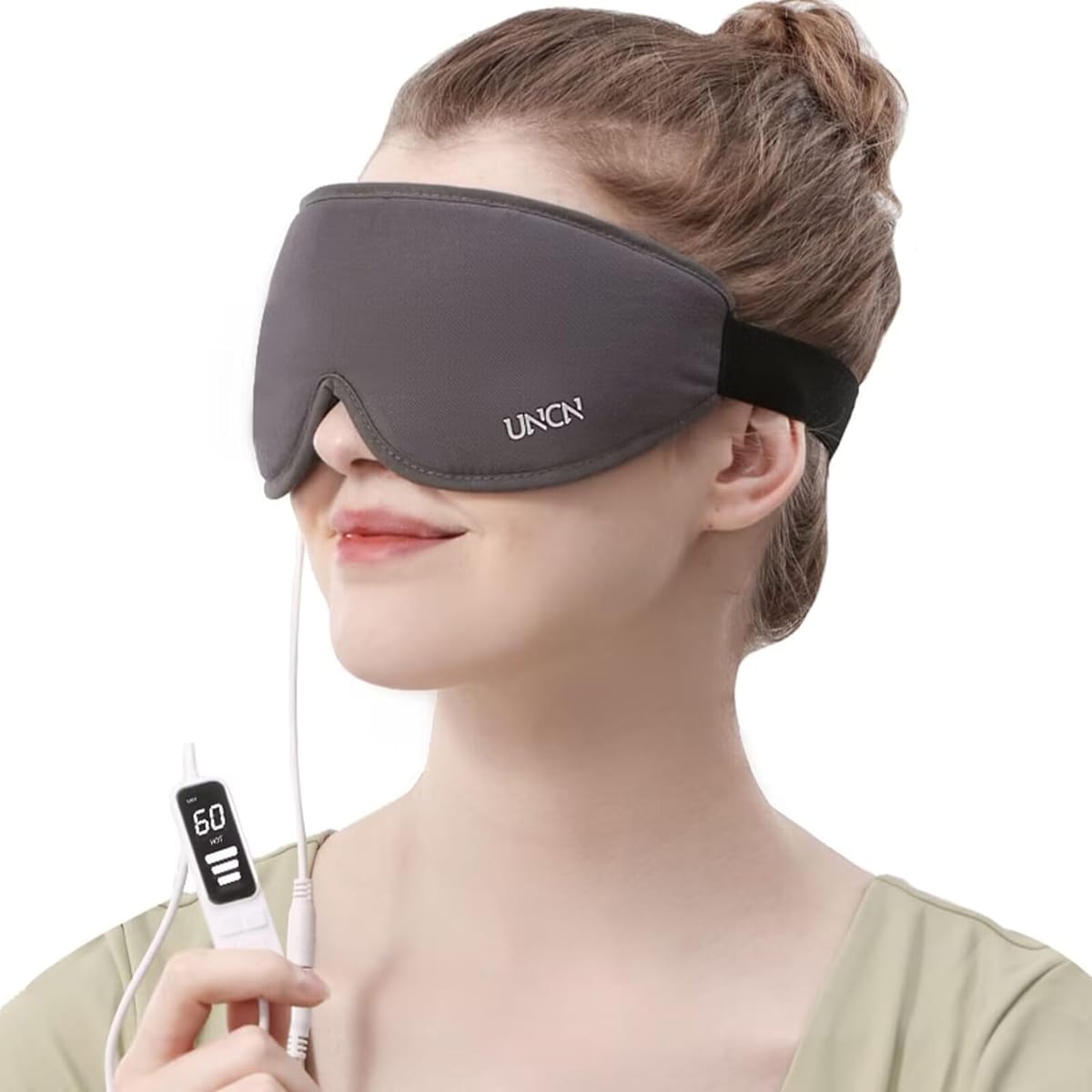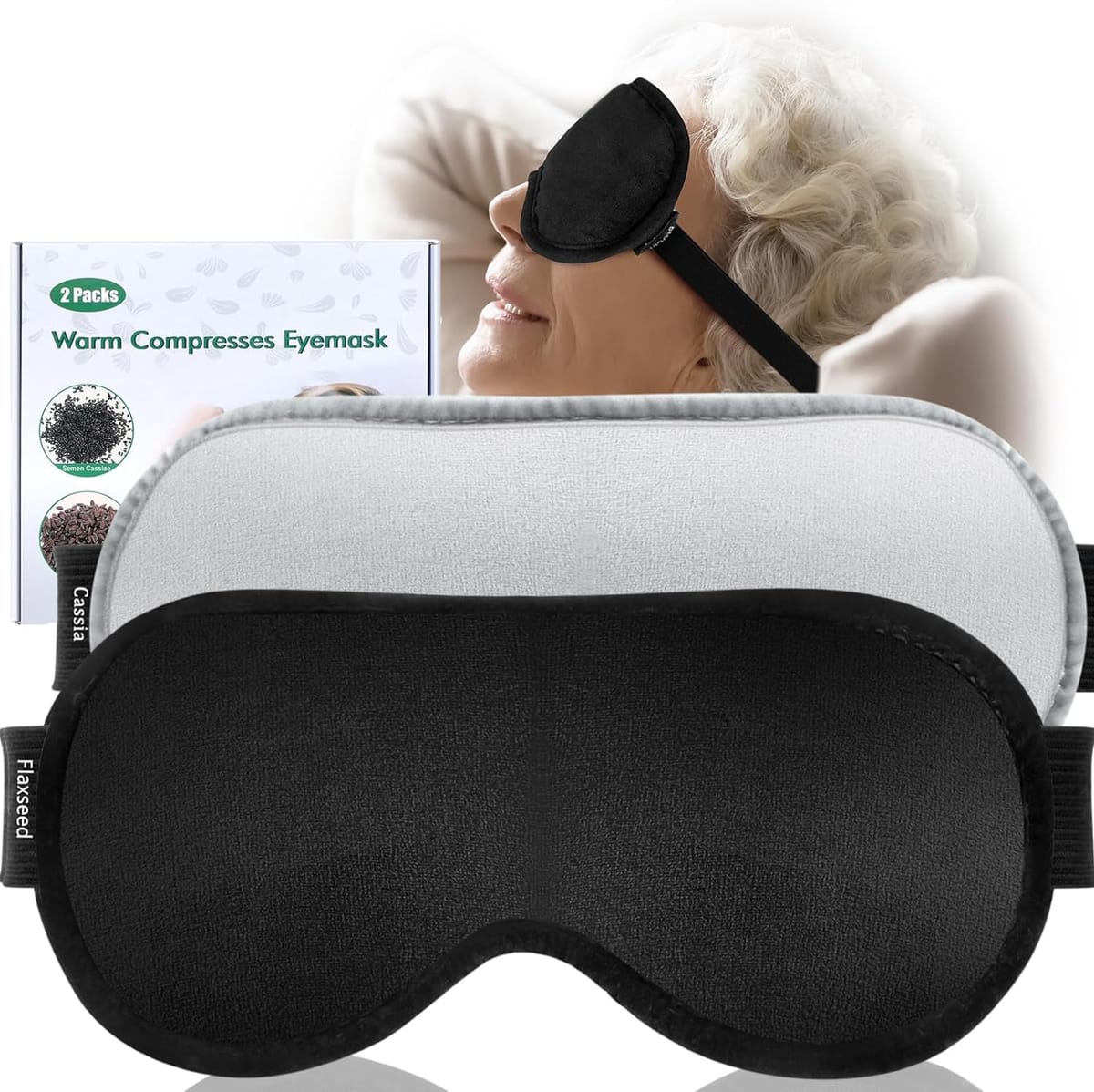Key Takeaways:
- Heated eye masks offer effective relief for migraine sufferers by providing soothing warmth and alleviating eye pain.
- These masks can also address issues like sinus pressure, dry eyes, and eye strain, making them versatile tools for overall eye health.
- Understanding the different types of eye masks and their benefits can help you choose the best option for your specific needs.
Introduction to Heated Eye Masks
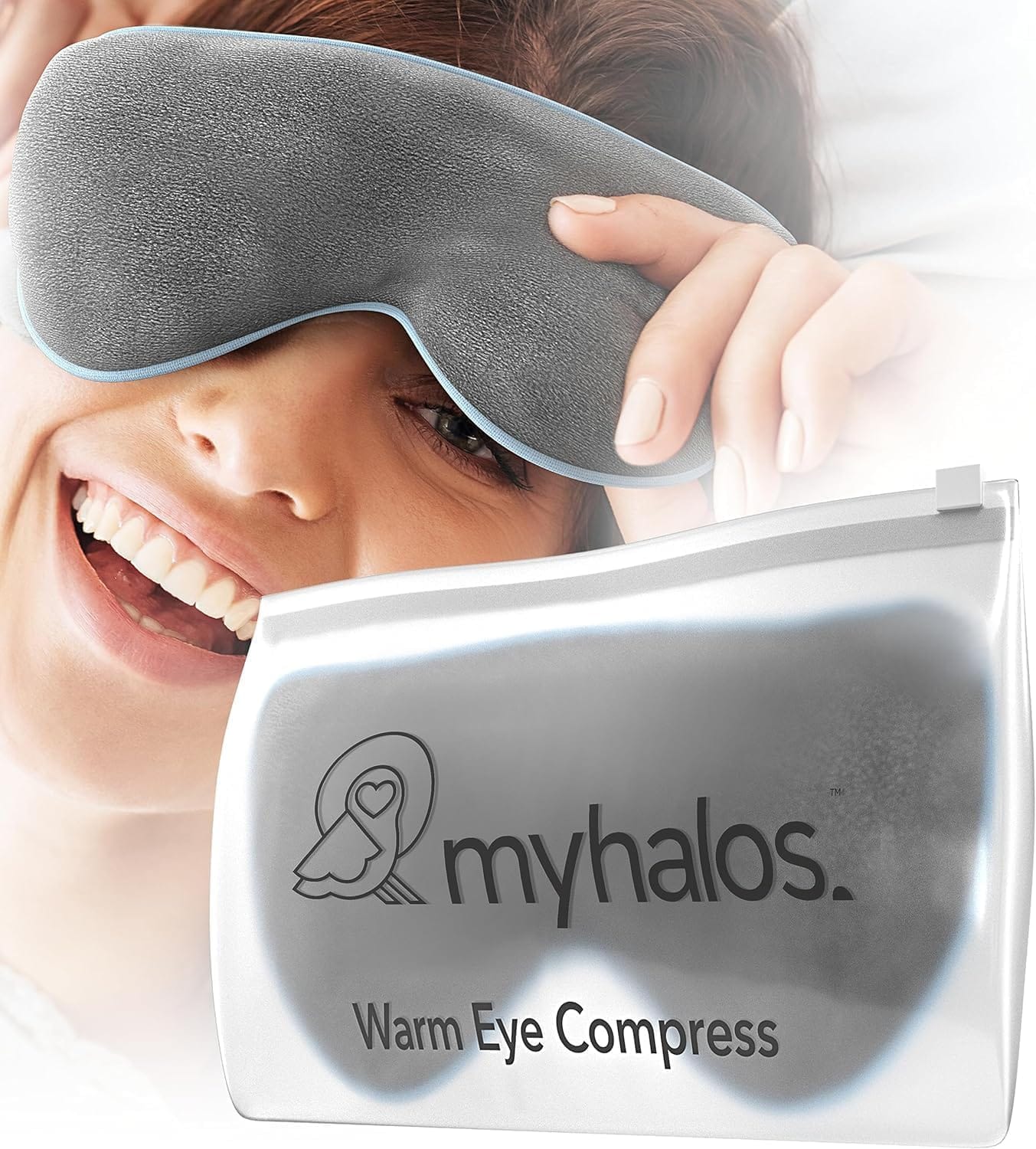
Heated eye masks have become a popular remedy for migraine relief and other eye-related issues. These masks provide soothing warmth that can help alleviate pain and discomfort. Whether you're dealing with migraines, sinus pressure, or dry eyes, a heated eye mask can offer significant relief.
The concept is simple yet effective: a mask that you can heat and place over your eyes. The warmth helps to relax the muscles around your eyes and forehead, providing a calming effect that can reduce the severity of migraines and other types of headaches.
How Heated Eye Masks Work
Heated eye masks work by applying gentle heat to the eye area. This heat helps to increase blood flow, which can reduce inflammation and relieve pain. The warmth also helps to relax the muscles around the eyes, which can be particularly beneficial for migraine sufferers.
These masks are often made from soft, non-allergenic materials that are comfortable to wear. They can be heated in a microwave or with a heating pad, making them easy to use. Some masks also come with adjustable straps, allowing you to customize the fit for maximum comfort.
Benefits of Heated Eye Masks
Migraine Relief
One of the primary benefits of heated eye masks is their ability to provide effective relief for migraines. The warmth helps to relax the muscles around the eyes and forehead, reducing tension and alleviating pain. This can be particularly beneficial for those who suffer from chronic migraines.
Sinus Pressure and Headache Relief
Heated eye masks can also help to relieve sinus pressure and headaches. The warmth helps to increase blood flow and reduce inflammation, which can alleviate pain and discomfort. This makes them a versatile tool for anyone dealing with sinus issues or frequent headaches.
Types of Heated Eye Masks
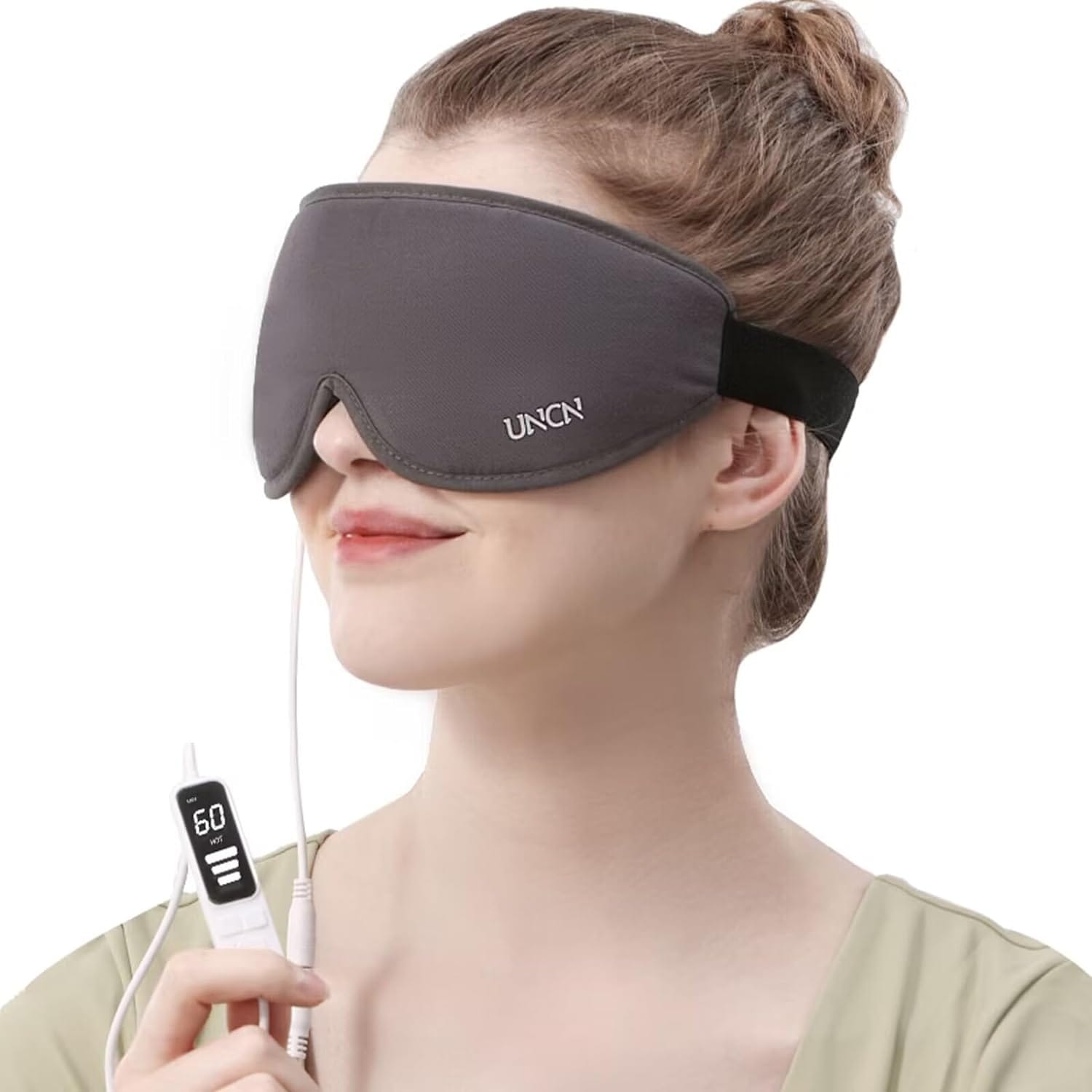

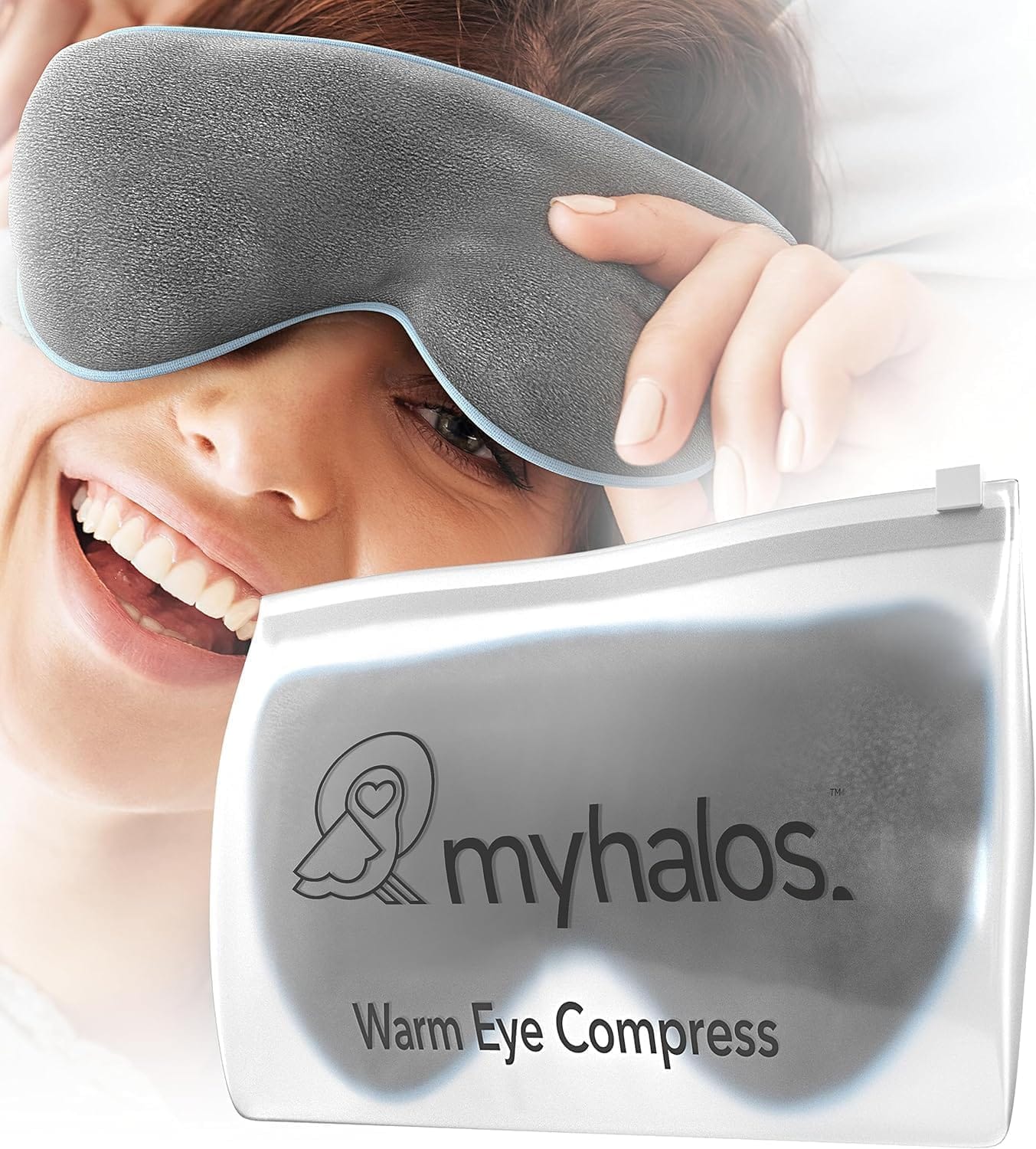
Microwave-Activated Masks
Microwave-activated masks are one of the most popular types of heated eye masks. These masks can be heated in a microwave for a few seconds, making them quick and easy to use. They are often filled with materials like flaxseed or rice, which help to retain heat and provide soothing warmth.
Electric Heated Masks
Electrically heated masks are another option for those seeking relief from migraines and other eye-related issues. These masks plug into an electrical outlet and provide consistent heat, making them a convenient option for home use. They often come with adjustable temperature settings, allowing you to customize the level of warmth.
Cold Therapy for Eye Relief
Cold Eye Masks
In addition to heated eye masks, cold eye masks can also provide relief for various eye-related issues. These masks can be chilled in the freezer and then placed over the eyes to reduce swelling and alleviate pain. They are particularly effective for puffy eyes and dark circles.
Cold Packs and Ice Packs
Cold packs and ice packs can also be used to provide relief for migraines and other types of headaches. The cold helps to reduce inflammation and numb the pain, providing quick and effective relief. These packs can be used in conjunction with heated eye masks for a comprehensive approach to pain relief.
Moist Heat vs. Dry Heat
Moist Heat
Moist heat is often considered more effective than dry heat for relieving eye pain and discomfort. Moist heat helps to increase blood flow and reduce inflammation, providing soothing relief for a variety of eye-related issues. Heated eye masks that use moist heat can be particularly beneficial for those dealing with dry eyes and meibomian gland dysfunction.
Dry Heat
Dry heat can also be effective for relieving eye pain and discomfort. Dry heat helps to relax the muscles around the eyes and forehead, reducing tension and alleviating pain. Heated eye masks that use dry heat are often more convenient to use, as they do not require any additional moisture.
Choosing the Right Eye Mask
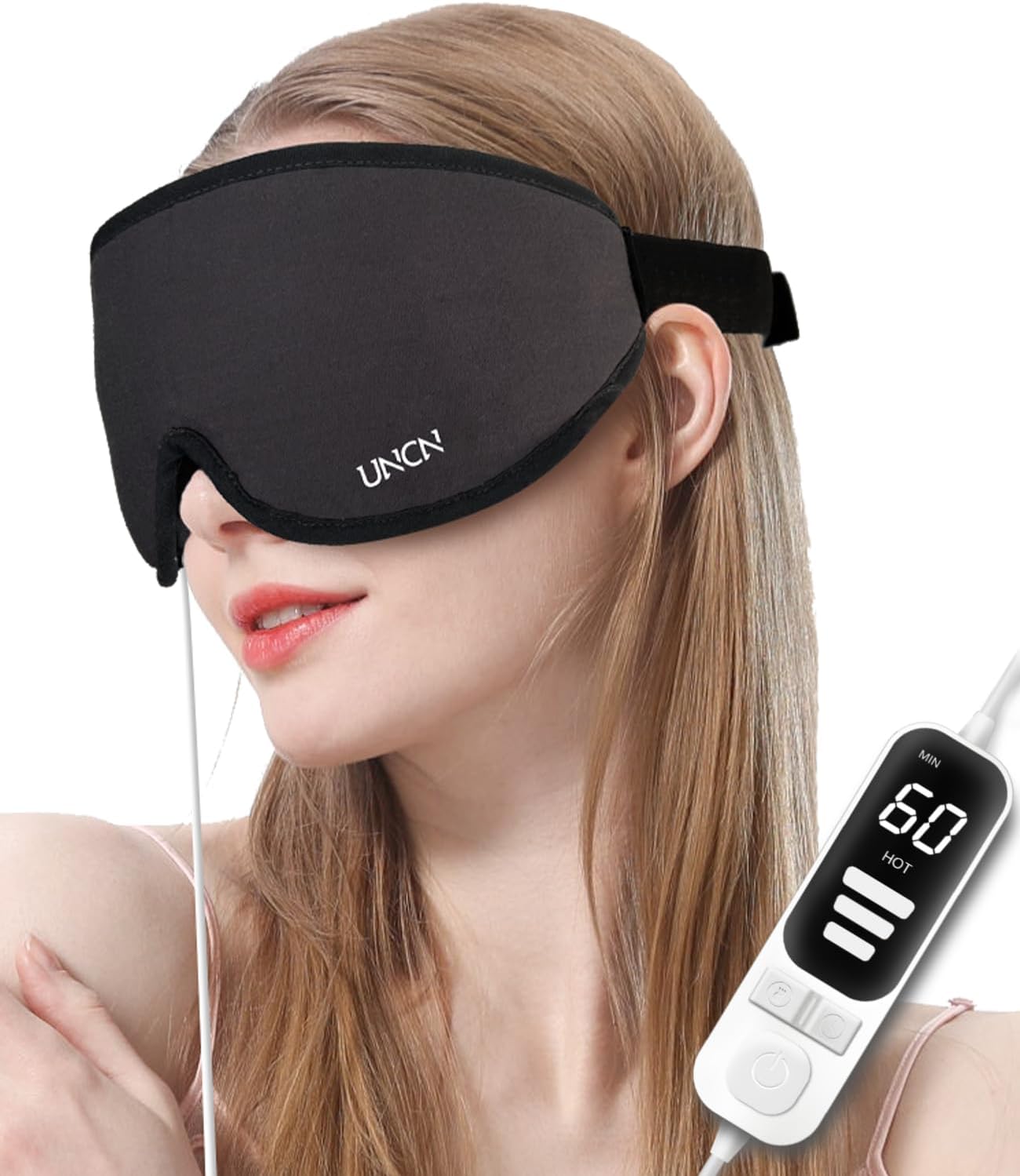

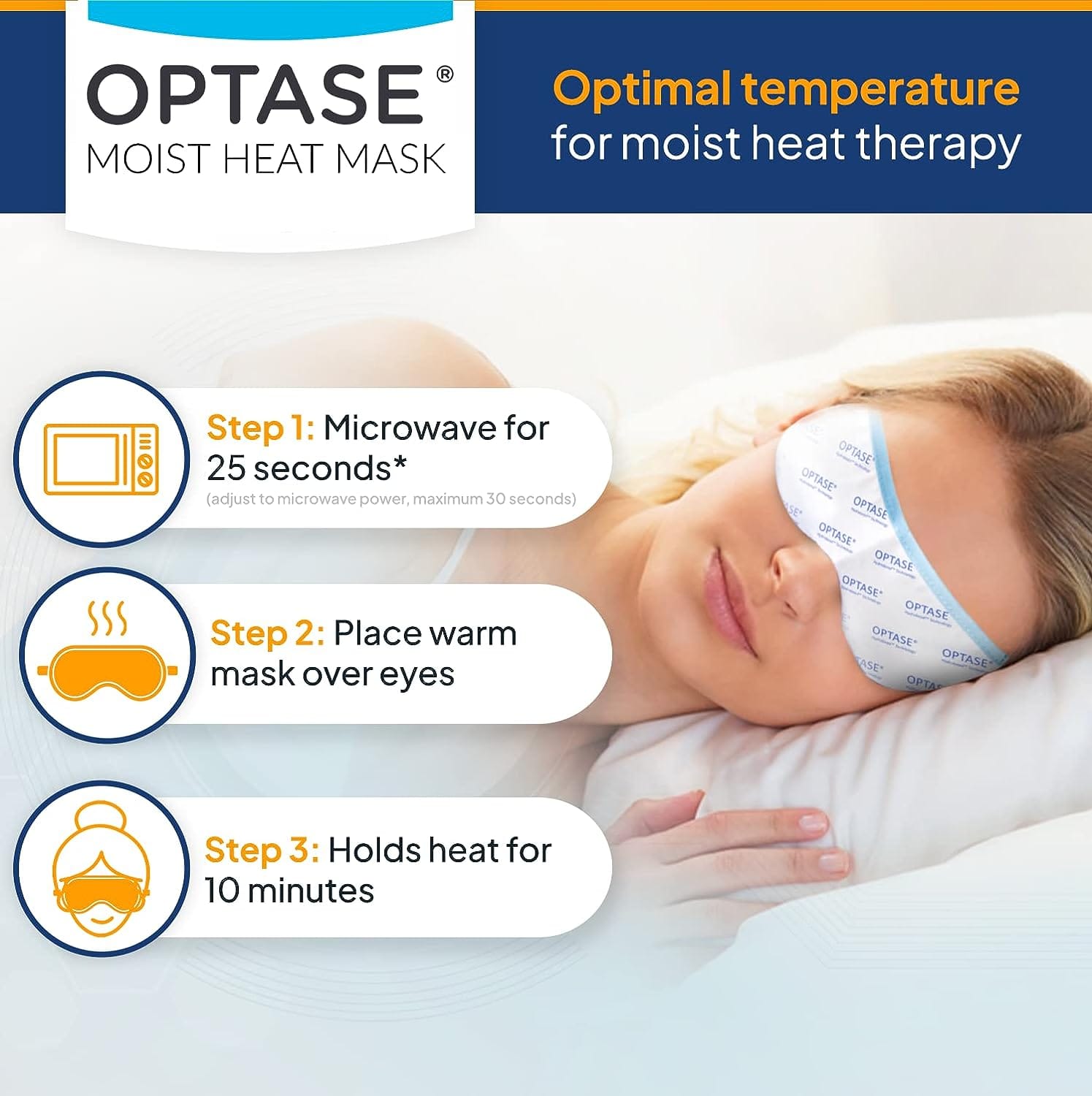
Material and Comfort
When choosing a heated eye mask, it's important to consider the material and comfort. Look for masks made from soft, non-allergenic materials that are comfortable to wear. Adjustable straps can also help to ensure a secure and comfortable fit.
Heat Retention
Heat retention is another important factor to consider when choosing a heated eye mask. Look for masks that are designed to retain heat for an extended period, providing consistent warmth and relief. Microwave-activated masks and electric-heated masks are both good options for heat retention.
The Role of Cold Eye Masks in Migraine Relief
Cold eye masks are a game-changer for those grappling with migraine pain. These masks, often filled with cooling gel, provide immediate cold relief by numbing the pain and reducing inflammation. Imagine the soothing sensation of an ice pack, but perfectly contoured to fit your eyes. The adjustable strap ensures a snug fit, making it easy to relax and let the cold work its magic. Whether you’re dealing with stress-induced headaches or the throbbing pain of a migraine, a cold eye mask can be a lifesaver.
Moreover, cold eye masks are reusable and non-allergenic, making them a practical addition to your migraine toolkit. Simply pop them in the freezer, and they’re ready to go whenever you need them. The cooling effect can also help alleviate symptoms of pink eye and reduce puffiness around the eyes. It’s like having a mini spa treatment right at your fingertips. So, the next time you feel a migraine coming on, reach for a cold eye mask and experience the relief firsthand.
The Benefits of Microwave-Activated Masks
Microwave-activated masks are another fantastic option for those seeking relief from migraine pain. These masks can be heated in the microwave, providing a warm, soothing sensation that helps to relax tense muscles and improve blood flow. The warmth from these masks can penetrate deep into the tissues, offering a comforting embrace that can ease the throbbing pain of a migraine. Plus, they’re incredibly convenient—just a few seconds in the microwave, and you’re good to go.
In addition to migraine relief, microwave-activated masks can also help with dry eye and sinus pressure. The moist heat generated by these masks can alleviate dryness and improve the function of the meibomian glands, which are crucial for maintaining healthy eyes. They’re also great for reducing stress and promoting relaxation, making them a versatile tool for overall well-being. With their reusable design and easy heating process, microwave-activated masks are a must-have for anyone looking to manage their migraine symptoms effectively.
Additional Benefits of Heated Eye Masks
Alleviating Eye Strain
Heated eye masks can also help to alleviate eye strain, which is a common issue for those who spend a lot of time in front of screens. The warmth helps to relax the muscles around the eyes, reducing tension and discomfort. This can be particularly beneficial for those who work on computers or use digital devices frequently.
Improving Sleep
Heated eye masks can also help to improve sleep by providing a calming and relaxing effect. The warmth helps to relax the muscles and reduce tension, making it easier to fall asleep and stay asleep. This can be particularly beneficial for those who suffer from insomnia or other sleep-related issues.
Using Heated Eye Masks Safely
Proper Heating Techniques
It's important to use proper heating techniques when using a heated eye mask. Follow the manufacturer's instructions for heating the mask, and be careful not to overheat it. Overheating can cause burns and other injuries, so it's important to use caution.
Monitoring Temperature
It's also important to monitor the temperature of the mask while using it. Make sure the mask is not too hot, as this can cause discomfort and potentially lead to burns. If the mask feels too hot, remove it and allow it to cool down before using it again.
Combining Heated and Cold Therapy
Alternating Heat and Cold
Combining heated and cold therapy can provide comprehensive relief for migraines and other eye-related issues. Alternating between heat and cold can help reduce inflammation, alleviate pain, and promote healing. This approach can be particularly effective for those dealing with chronic migraines or sinus issues.
Using Both Types of Masks
Using both heated and cold eye masks can provide a well-rounded approach to eye care. Heated masks can help to relax the muscles and increase blood flow, while cold masks can reduce swelling and numb the pain. This combination can provide effective relief for a variety of eye-related issues.
Addressing Specific Eye Conditions
Dry Eyes and Meibomian Gland Dysfunction
Heated eye masks can be particularly beneficial for those dealing with dry eyes and meibomian gland dysfunction. The warmth helps to increase blood flow and promote the production of natural oils, providing soothing relief for dry and irritated eyes.
Puffy Eyes and Dark Circles
Cold eye masks can be effective in reducing puffiness and dark circles around the eyes. The cold helps to reduce swelling and constrict blood vessels, providing quick and effective relief. This can be particularly beneficial for those dealing with tired eyes or allergies.
Practical Tips for Using Heated Eye Masks
Consistent Use
For best results, it's important to use heated eye masks consistently. Incorporate them into your daily routine, using them for a few minutes each day to provide ongoing relief and support for your eyes.
Pairing with Other Treatments
Heated eye mask can be used in conjunction with other treatments for comprehensive eye care. Pair it with eye drops, a cold pack, or another remedy to provide well-rounded relief for a variety of eye-related issues.
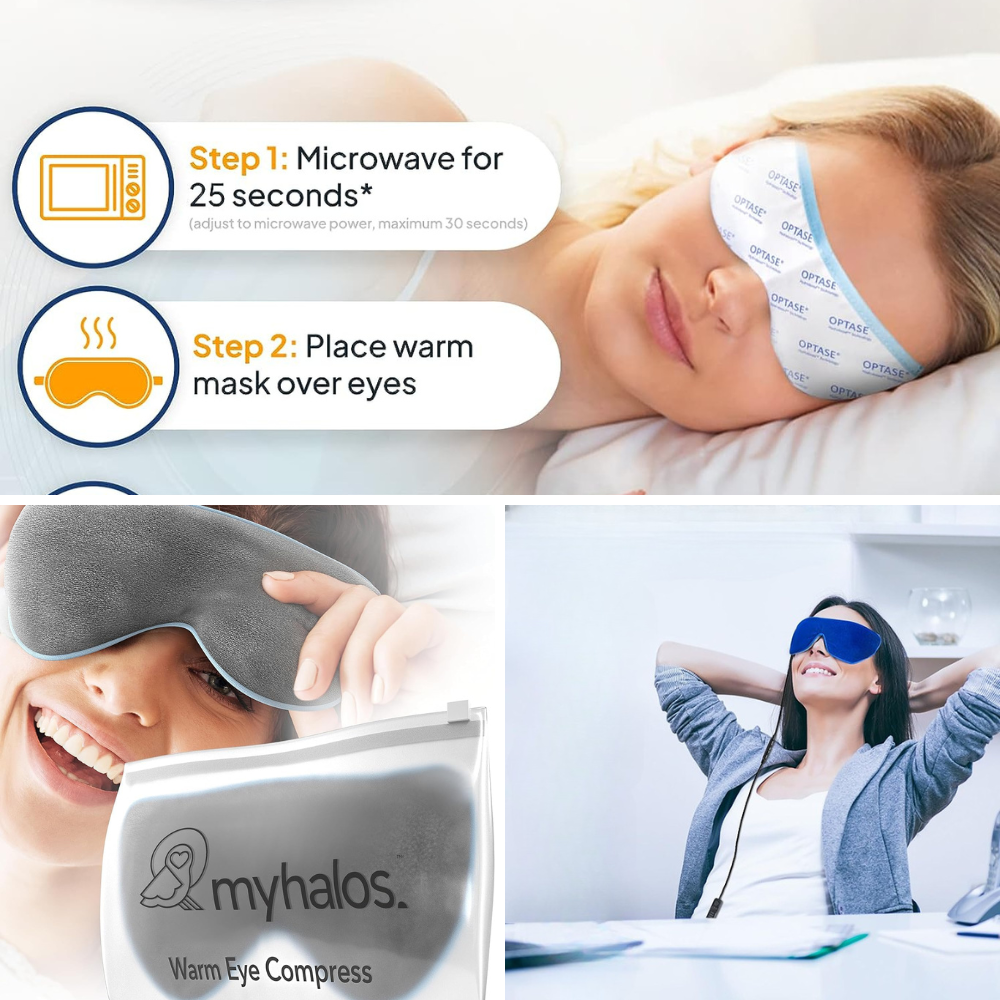

How long should I use heated eye masks for migraine relief?
It's generally recommended to use a heated eye mask for about 10-15 minutes at a time. This allows the warmth to penetrate the muscles and provide effective relief without causing discomfort or overheating.
Can I use a heated eye mask if I have sensitive skin?
Yes, many heated eye masks are made from soft, non-allergenic materials that are gentle on sensitive skin. However, it's important to monitor the temperature and ensure the mask is not too hot to avoid irritation.
Are there any side effects of using heated eye masks?
Heated eye masks are generally safe to use, but it's important to follow the manufacturer's instructions and use proper heating techniques. Overheating the mask can cause burns or discomfort, so it's important to use caution and monitor the temperature.

Heated eye masks offer a versatile and effective solution for migraine relief and other eye-related issues. By providing soothing warmth, these masks can help to relax the muscles around the eyes, increase blood flow, and alleviate pain. Whether you're dealing with migraines, sinus pressure, or dry eyes, a heated eye mask can provide significant relief. Understanding the different types of masks and their benefits can help you choose the best option for your specific needs.
